In a moment when the way to show we care is by keeping our distance as much as possible, fighting effectively for a safe and just society and planet can feel impossible.
2019 was a big year. You went to the strikes, you made them historic. You wrote your representative, change was made. You gathered and protested and made your voice heard.
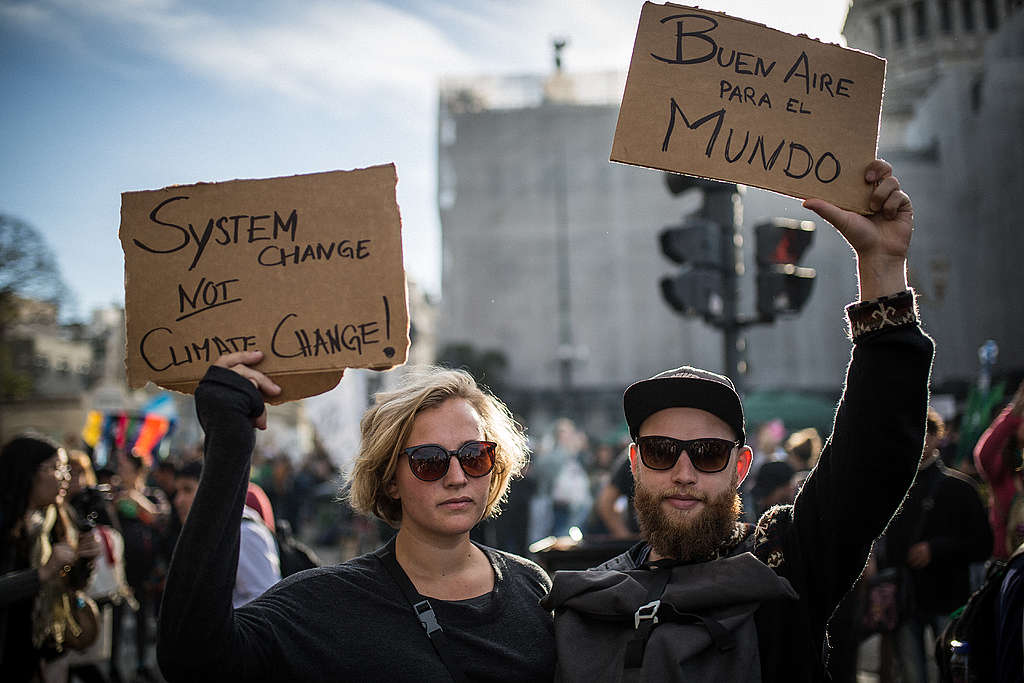
©Nicolás Villalobos/Greenpeace
Now we’re in the middle of another historic global moment, one whose magnitude we’re still processing.
But the fight against the climate crisis still isn’t going anywhere and staying home right now, if you’re able, and helping slow the spread of COVID-19 is all of our priority right now. To protect our family, our friends and do our best to relieve a strained medical system and to support communities that are most affected by the pandemic and most at risk, such as Indigenous communities.
However, if you’re fortunate enough to be able to stay home and are ready to add climate action back into your routine, read more for some of our favorite ways to stay connected to the movement wherever you find yourself:
Dinner Table Discussions: Use this moment of social distancing to really engage your close ones in a conversation on the climate crisis (whether it is online, or at the actual dinner table). Spend time understanding what people are thinking, what issues matter to them in their neighborhood, community or city, and what are the potential remedies. These conversations will look a lot different than they do with climate activists, and that’s okay! Remember, spend 70% of your time listening and 30% speaking. Document these conversations, if you want and share them to encourage others to do the same.
(Here’s a tip: Open with “what are three things you would change about your city if you were mayor for a week?” or “as a member of this community, what do you think we should be asking of our city council to mitigate this crisis?”)
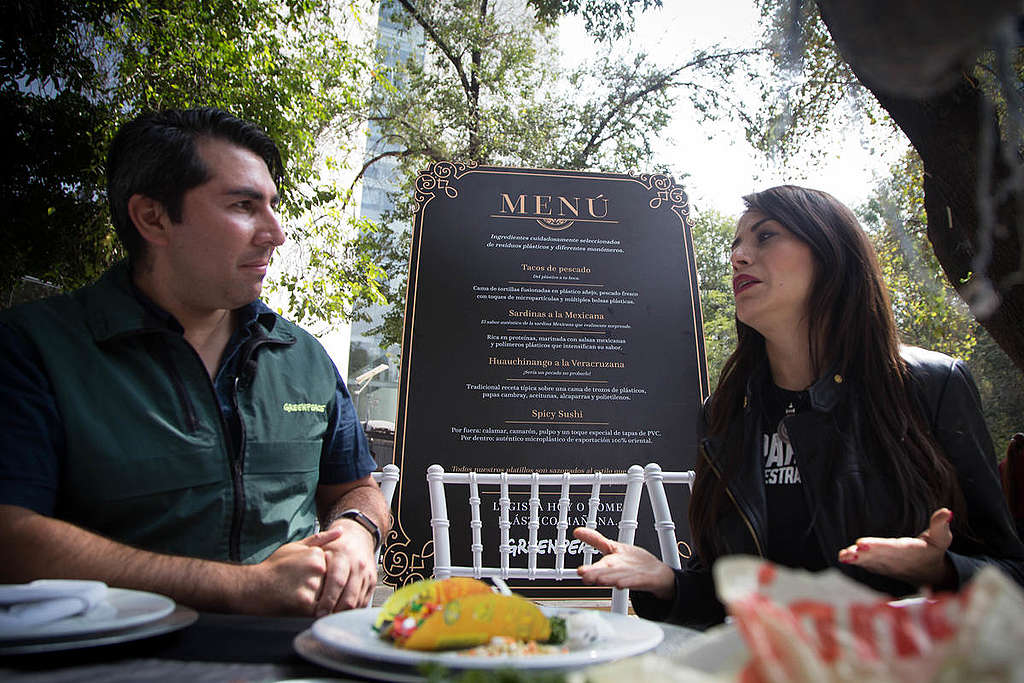
©Ilse Huesca Vargas / Greenpeace
Build Bridges: Put your research skills to work! Find out which local advocacy groups in your city or state are active in the fight for the climate, including water rights, land use, climate justice or any other topic that’s important to you. Learn more about their campaigns, their causes, and see how you start sharing the word now to start building bridges now for future collaboration!
Get informed: If you have the time, or are looking for an activity the whole family can participate in, make that reading list of climate books you’ve always meant to. Or catch up on some environmental documentaries. Get inspired by these stories and discuss.
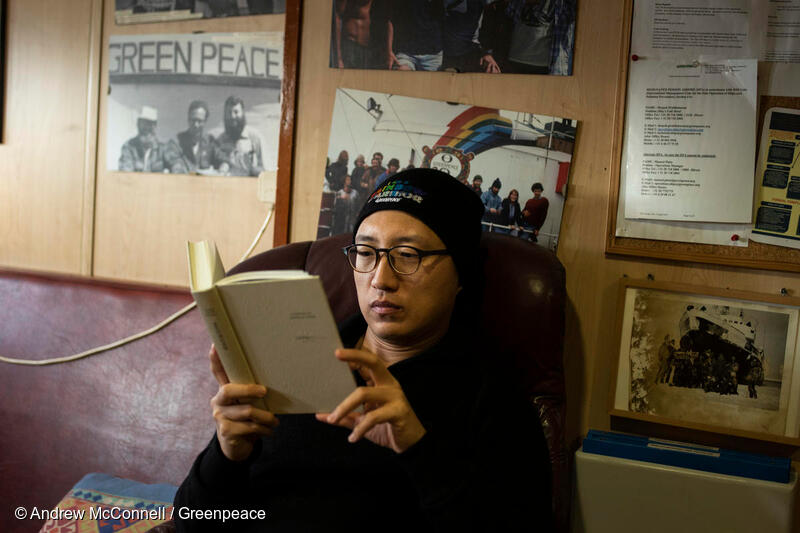
©Andrew McConnell/Greenpeace
Participate in online forums about the climate crisis: Engage in conversations around the climate emergency. There are many free webinars where you can listen to the experts’ opinions. Share these webinars with your friends or, even better, open a discussion about what you have learned.
Get Social:
There are many ways to be an activist digitally in times of quarantine too
- Create unique Instagram filters or a template for your story, which help to make your campaign visible (Here is an example from an oceans campaign) and others can share on their own accounts.
- Start a Twitter storm: make people aware of the environmental problem that is occurring, the more tweets there are, the better it will be! If you know users with a large number of followers, you can ask them to spread the word about your campaign.
- Use Tik Tok and new digital trends to approach a serious and technical problem in a friendlier language (be creative!).
- Use these channels to share news, videos and your ideas about the climate crisis and its impact. If you find news that you feel passionate about, for example, deforestation, endangered species, air pollution, you can share them on your social networks. Make sure you always check that the information is accurate and post from trusted organisations and news outlets. Get your friends and followers involved in the discussion.
Be aware of your consumption habits:
Review your daily habits. If we all look over our regular consumptions, we realize that our small actions can contribute to mitigate the climate crisis.
- What we eat is important to reconsider. Ask yourself about your meat consumption and try to reduce it, so you can contribute in the fight against climate emergency. 14.5% of global greenhouse gas emissions come directly from livestock. And if you have extra time now, what a better time to experiment with plant-based recipes. See what new dish you can create!
- You can also take this time to battle plastic pollution. Start by checking how many single-use plastics you consume currently and if they’re necessary. Spoiler: they’re not. (Unsure if something is reusable or disposable? Check your facts). Keep this in mind if you have to go to the market. And take the time to plan and make a list. An organized refrigerator will help prevent food waste — a major contributor to the climate crisis— and save you unnecessary trips to the store in this uncertain time. You can also finally try growing some of your own food; start with herbs or veggies to grow on your windowsill.
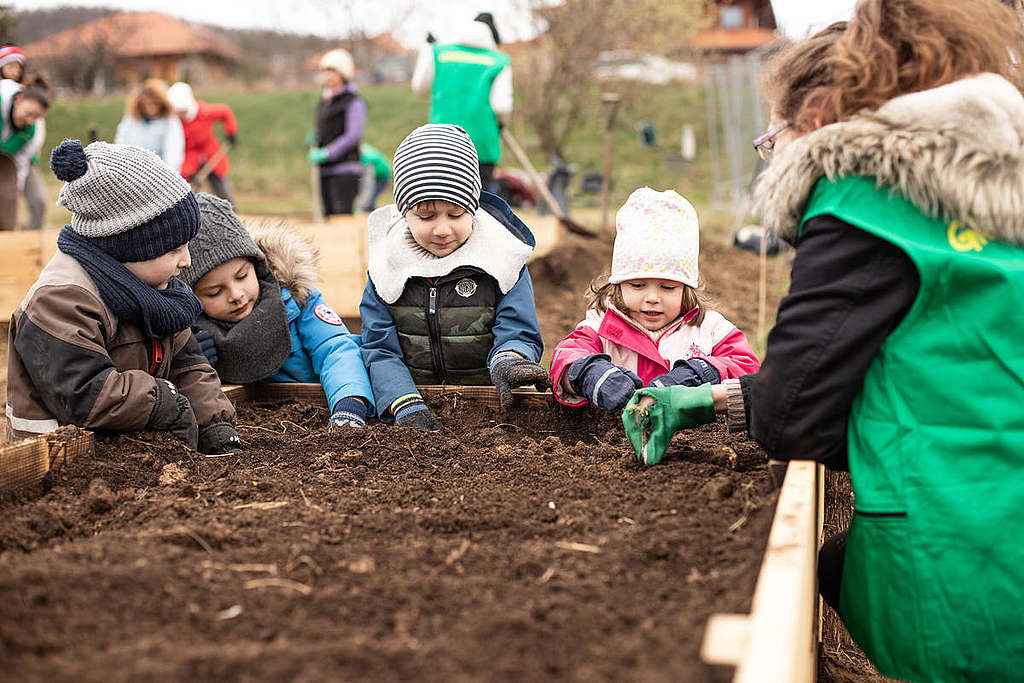
© Zsuzsi Dorgo / Greenpeace
- Find a way to reuse the plastic you already have. How can you repurpose? When you’ve used up a container, make sure to clean it up and if you can’t repurpose, recycle. Find out where you can take them after the isolation. If you don’t know where to start, your city will have information that might help you. Reusing plastics are good ways to prevent you from buying more needless plastics.
Use these ideas as a starting point for creative thinking to move forward.
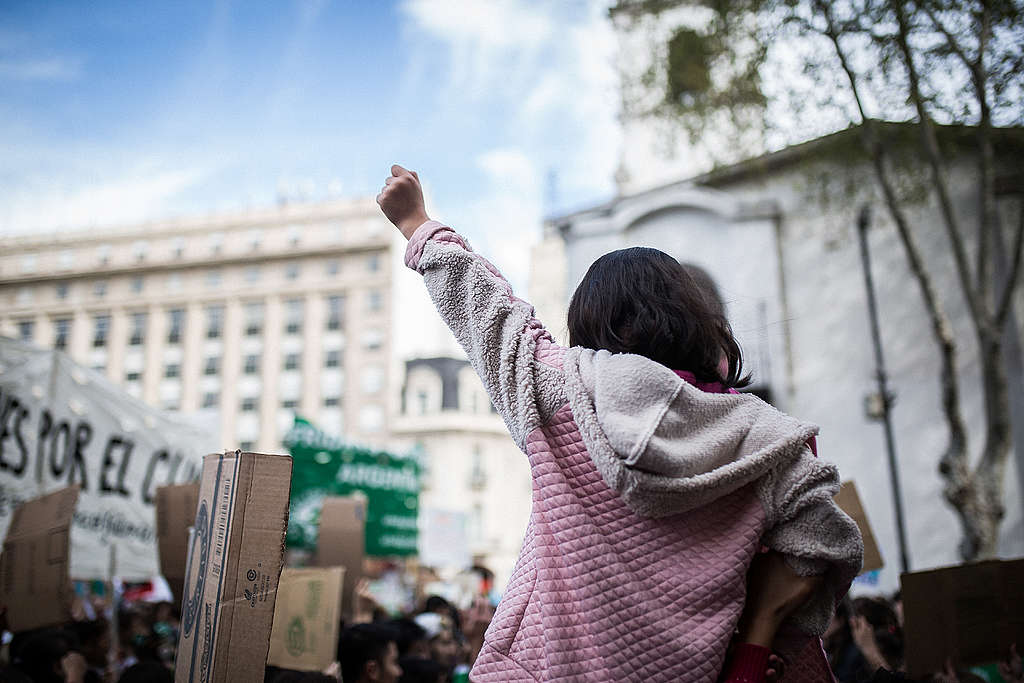
©Nicolás Villalobos/Greenpeace
In a world of quarantines and disruption of offline life, let’s continue to make our demands impactful and innovative as possible.
And don’t forget, solidarity is a powerful thing. Together we can overcome anything.
Español
Cómo puedes ser un activista desde casa
En este momento, en el que la forma de demostrar cuánto nos importan los demás es a través de mantener la mayor distancia posible, luchar de manera efectiva por una sociedad y un planeta seguros y justos puede parecer imposible.
El 2019 fue un gran año. Has participado de las huelgas climáticas y las has convertido en un suceso histórico. Le has escrito a los representantes de tu gobierno y se han realizado cambios. Se han reunido y protestaron para hacer oír sus voces.
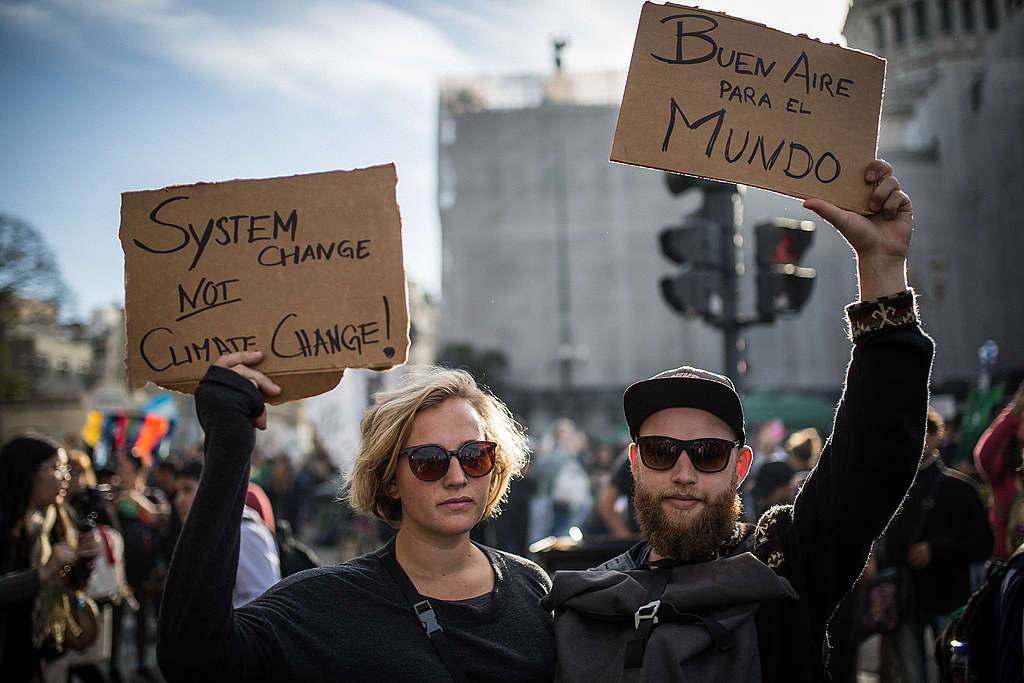
©Nicolás Villalobos/Greenpeace
Ahora estamos en medio de otro momento global histórico, uno cuya magnitud aún estamos procesando.
Si bien la lucha contra la crisis climática se mantiene presente, hoy quedarnos en casa, si se puede, y ayudar a frenar la propagación de COVID-19 es nuestra prioridad. Para proteger a nuestra familia, nuestros amigos y hacer todo lo posible para aliviar el sistema de salud. Y, sobre todo, para apoyar a las comunidades más afectadas por la pandemia y en mayor riesgo, como las comunidades Indígenas.
Sin embargo, si tienes la suerte de quedarte en casa y estás listo para sumar la acción climática a tu nueva rutina, aquí podrás leer más sobre algunas de nuestras formas favoritas de mantenerse conectado con el movimiento climático, desde tu hogar.
Conversaciones a la hora de la cena: Usa este momento de distanciamiento social para fomentar conversaciones con tu familia y amigos a cerca de la crisis climática (puede ser online o mientras comparten la cena). Tomate tu tiempo para entender lo que ellos piensan, qué problemas de su barrio, su comunidad o su ciudad realmente les importan y cuáles serían las posibles soluciones. Estas conversaciones, sin dudas, serán muy diferentes a las que podrías mantener usualmente con activistas climáticos, pero está bien! Recuerda, pasa el 70% de tu tiempo escuchando y el 30%, hablando. Sería bueno que tomes notas de estas conversaciones, si lo deseas, así puedes compartirlas con otros para motivarlos a hacer lo mismo. (Aquí va un consejo: Empieza con una pregunta que sirva de disparador como “¿qué tres cosas cambiarías de tu ciudad si fueses el alcalde por una semana?” ó “como un miembro de esta comunidad, ¿qué crees que deberíamos reclamar a los representantes del gobierno para mitigar esta crisis?”).

©Ilse Huesca Vargas / Greenpeace
Construye puentes: Pon tus habilidades de investigación a trabajar! Encuentra qué grupos en tu ciudad o estado o provincia están trabajando activamente en la lucha por el clima, incluyendo los derechos de agua, el uso de la tierra, la justicia climática o cualquier otro tema que sea importante para ti. ¡Aprende más sobre sus campañas, sus causas y busca cómo entablar conversaciones con ellos ahora para comenzar a construir puentes para una futura colaboración!
Mantente informado: Si tienes el tiempo, o estás buscando alguna actividad para toda la familia, haz una lista de libros sobre ecología. O puedes ponerte al día con algunos documentales medioambientales. Siéntete inspirado por estas historias y empieza conversaciones con tu familia y amigos.

©Andrew McConnell/Greenpeace
Participa en foros o conversatorios online acerca de la crisis climática: Involúcrate en conversaciones sobre la emergencia climática. Hay muchas opciones de webinars gratuitos, en los que puedes escuchar las opiniones de expertos. Comparte estos webinars con tus amigos o, aún mejor, abre la discusión a tus amigos y allegados para contarles que has aprendido.
Mantente activo en redes sociales:
Hay muchas formas de ser un activista digital en tiempos de cuarentena.
- Puedes crear originales filtros de Instagram, que te ayuden a hacer tu campaña más visible (Aquí un ejemplo de una campaña para proteger los océanos). Así, otros podrán compartir tu contenido en sus cuentas.
- Comienza un Twitter storm: haz que la gente conozca sobre un problema ambiental que está ocurriendo y cuantos más tweets haya, ¡mejor será! Si conoce usuarios con una gran cantidad de seguidores, puedes pedirles que difundan tu campaña.
- Usa Tik Tok y nuevas tendencias digitales para acercar un problema serio y que suele ser de un conocimiento técnico a través de un lenguaje amigable. Se creativo!
- Usa estos canales para compartir noticias, videos y tus ideas sobre la crisis climática y sus impactos en el mundo. Si encuentras noticias que te sientes fuertemente de, por ejemplo sobre deforestación, especies en peligro de extinción o contaminación de aire, puedes compartirlas en tus redes sociales. Es importante que siempre valides que la información sea correcta y que las publicaciones sean de de organizaciones confiables y medios de noticias. Involucra a tus amigos y tus seguidores en la conversación.
Toma conciencia de tus hábitos de consumo:
Revisa tus hábitos diarios. Si todos examinamos nuestros consumos frecuentes, notaremos que nuestras pequeñas acciones pueden contribuir a la mitigación del cambio climático.
- Lo que comemos es algo importante para reconsiderar. Pregúntate sobre tu consumo de carne y trata de reducirlo. De eso, modo colaborarás en la lucha contra el cambio climático, ya que el 14.5% de las emisiones de gases de efecto invernadero, a nivel mundial, provienen directamente de la ganadería. Y si ahora tienes tiempo extra, que mejor que usarlo para experimentar con recetas a base de vegetales. ¡Mira qué plato nuevo puedes crear!
- También puedes usar este tiempo para combatir la contaminación plástica. Puedes empezar revisando cuántos plásticos de uso único tienes actualmente y si realmente son necesarios. (No lo son y tienes dudas de si algunos plásticos son reutilizables o desechables. Chequea los datos). Ten todo esto en mente cuando vuelvas al mercado, y tómate el tiempo de realizar una lista. Un refrigerador organizado evitará que tu comida se eche a perder, uno de los contribuidores principales de la crisis climática, pero también te evitará varias salidas innecesarias al mercado en estos tiempos de incertidumbre. También, puedes intentar cultivar algunos de tus propios alimentos. Puedes comenzar con hierbas o vegetales para hacer crecer en el alféizar de tu ventana.

© Zsuzsi Dorgo / Greenpeace
- Encuentra modos de reutilizar los plásticos que ya tienes. ¿Cómo los puedes reutilizar? Cuando dejes de usarlos, puedes lavarlos y, si no puede reutilizarlo, recicle. Averigua dónde puedes llevarlos luego del aislamiento. Si no sabes por dónde comenzar, tu alcaldía o municipalidad tendrá información para ayudarte. Reutilizar te ayudará a no comprar más plástico innecesario.
Usa estas ideas como un punto de partida para pensar creativamente y avanzar.
En un mundo de cuarentenas y de interrupción de la vida cotidiana, sigamos haciendo que nuestras demandas sean impactantes, innovadoras y disruptivas, como sea posible.
Y no lo olvides, la solidaridad es algo poderoso. Juntos podemos superar lo que sea.

©Nicolás Villalobos/Greenpeace
